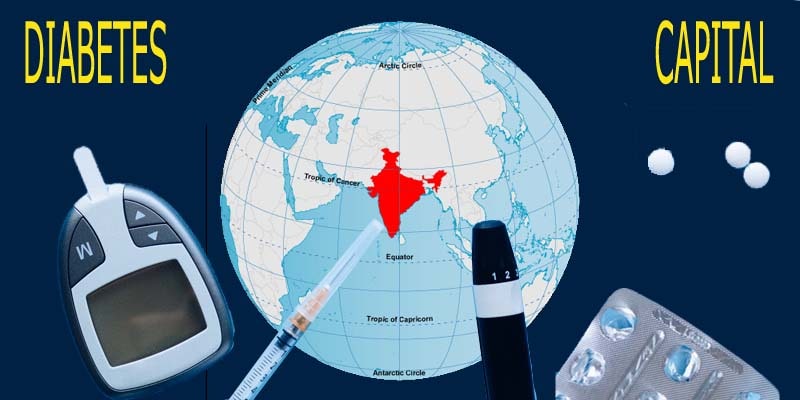
Diabetes, a global public health problem, is now emerging as a pandemic and by the year 2025, three-quarters of the world’s 300 million adults with diabetes will be in non-industrialized countries and almost a third in India and China alone.
Diabetes has become an epidemic having a huge impact on people of all age groups. No matter how much awareness is created about the disease, it is still lesser in comparison to the complications it gives rise to.
 Diabetes poses a major health problem globally and is one of the top five leading causes of death in most developed countries. A substantial body of evidence suggests that it could reach epidemic proportions particularly in developing and newly industrialized countries. Indeed, by the year 2025, three-quarters of the world’s 300 million adults with diabetes will be in developing countries, and almost a third in India and China alone. The prevalence of diabetes in India is showing a sharp upswing as is evident from secular trends from different parts of the subcontinent and studies of migrant Indians. The World Health Organization has estimated that in 1995,19.4 million individuals were affected by diabetes in India and these numbers are expected to increase to 57.2 million by the year 2025 i.e. one-sixth of the world total. The revised figures are 80.9 million by the year 2030
Diabetes poses a major health problem globally and is one of the top five leading causes of death in most developed countries. A substantial body of evidence suggests that it could reach epidemic proportions particularly in developing and newly industrialized countries. Indeed, by the year 2025, three-quarters of the world’s 300 million adults with diabetes will be in developing countries, and almost a third in India and China alone. The prevalence of diabetes in India is showing a sharp upswing as is evident from secular trends from different parts of the subcontinent and studies of migrant Indians. The World Health Organization has estimated that in 1995,19.4 million individuals were affected by diabetes in India and these numbers are expected to increase to 57.2 million by the year 2025 i.e. one-sixth of the world total. The revised figures are 80.9 million by the year 2030
Here are some interesting facts about the condition that will surprise you.
- Diabetes mellitus = sweet urine: The word ‘diabetes’ comes from the Greek language. It literally stands for ‘siphon,’ a term referring to frequent urination. ‘Mellitus,’ in Latin, means sweet or honey. So, the words diabetes mellitus literally means sweet urine, summarising one of the early, key symptoms of the condition.
- India is the diabetes capital of the world: India hosts the largest diabetic population in the world. According to the International Diabetes Federation, the number of people suffering from diabetes in India has exceeded more than 50 per cent from what it was in the year 1995.
- Most cases of diabetes are still undiagnosed: Several people in India have IGT (Impaired Glucose Tolerance) or prediabetes, a condition which can lead to diabetes without proper lifestyle measures. Prediabetes prevalence in India is estimated to be around 8.7 per cent in urban areas. It is also estimated that 35 per cent of this prediabetic population will progress to develop type 2 diabetes in their lifetime.
- Diabetes will soon become the leading fatal disease: According to the World Health Organisation (WHO), diabetes will become the 7th leading cause of death by the year 2030 and more than 50% of this rise would be seen in the next 10 years.
- Diabetes is the leading cause of kidney failure: Diabetes leads to various complications but kidney problems tops the list. Although, prevalence of heart disease is thought to be more common in diabetics, maximum cases of kidney failure occur due to diabetes.
- Poor lifestyle is the main cause of the disease: Lack of physical activity contributing to central obesity or the peculiar apple-shaped body is the main reason for insulin resistance among Indians. However, in India, only one-third of diabetics are obese.
- Diabetes is one of the costliest diseases: The current cost of treating diabetes and its complications on a global level is estimated as US $ 215-375 billion. According to the WHO, a diabetic person belonging to a low-income group in India spends about 25% of his family income on diabetes care.
- Diabetes is preventable: The WHO fact sheet on diabetes notes that 30 minutes of moderate physical activity coupled with a healthy diet can prevent diabetes or reduce the risk of developing it.
It’s just unfortunate that people don’t realise the impact that diabetes can have on their lives.
Reference:
10 facts about diabetes. World Health Organisation (WHO)
Diabetes. International Diabetes Federation (IDF)











